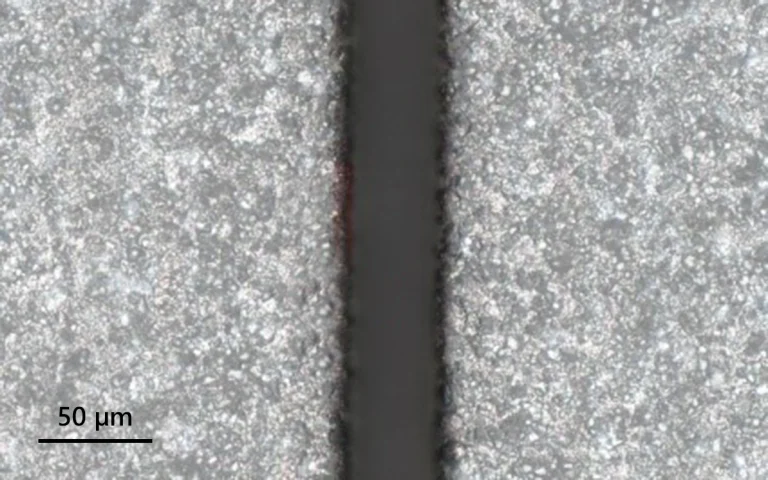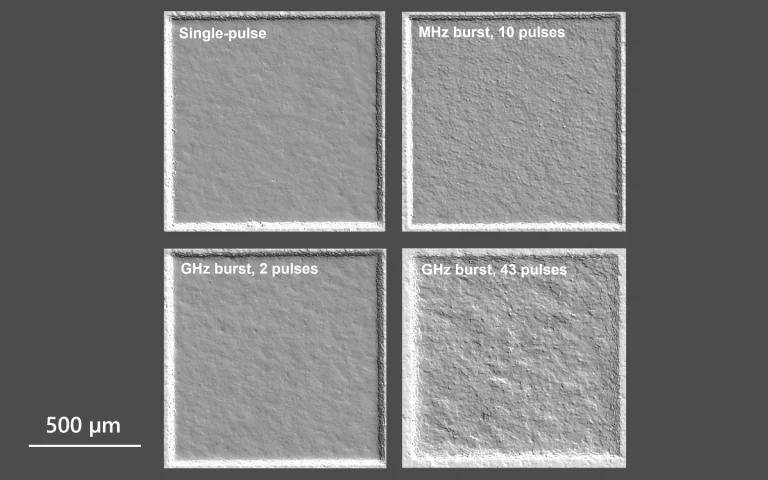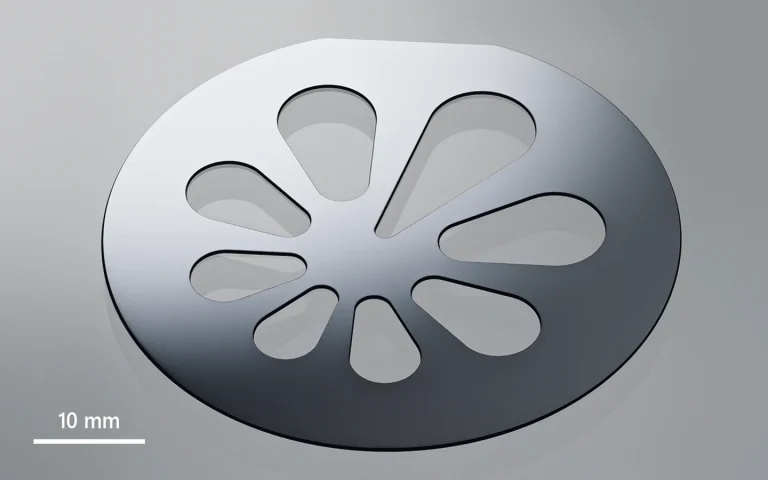Other materials
Compared to traditional methods, femtosecond lasers with their very short pulse durations offer superior precision. Complex 3D structures as well as non-conventional shapes can be obtained.
Ceramic processing with GHz burst
Femtosecond lasers have proven to be highly effective for processing ceramics, offering superior precision compared to traditional mechanical methods. However, they often fall short in terms of throughput. Several strategies can be employed to increase the processing rate, such as increasing the repetition rate, performing beam splitting, or enlarging the spot size. Each of these methods has its own advantages and disadvantages. A novel approach to increasing the throughput is the use of GHz bursts, which are trains of femtosecond pulses with intra-burst repetition rates in the GHz range. This technique effectively splits a single high-energy pulse into multiple smaller pulses, maximizing the laser power and increasing processing throughput.
In a comprehensive study, the FemtoLux 30 with its GHz burst feature was utilized to investigate the influence of MHz and GHz bursts on processing alumina ceramics. Squares of 1×1 mm2 were milled using different burst modes, and the removed volumes were measured with an optical 3D profilometer. In the result, by using 92 pulses in the GHz burst mode, the process throughput increased from 6.39 mm3/min (single-pulse mode) to 10.38 mm3/min.






